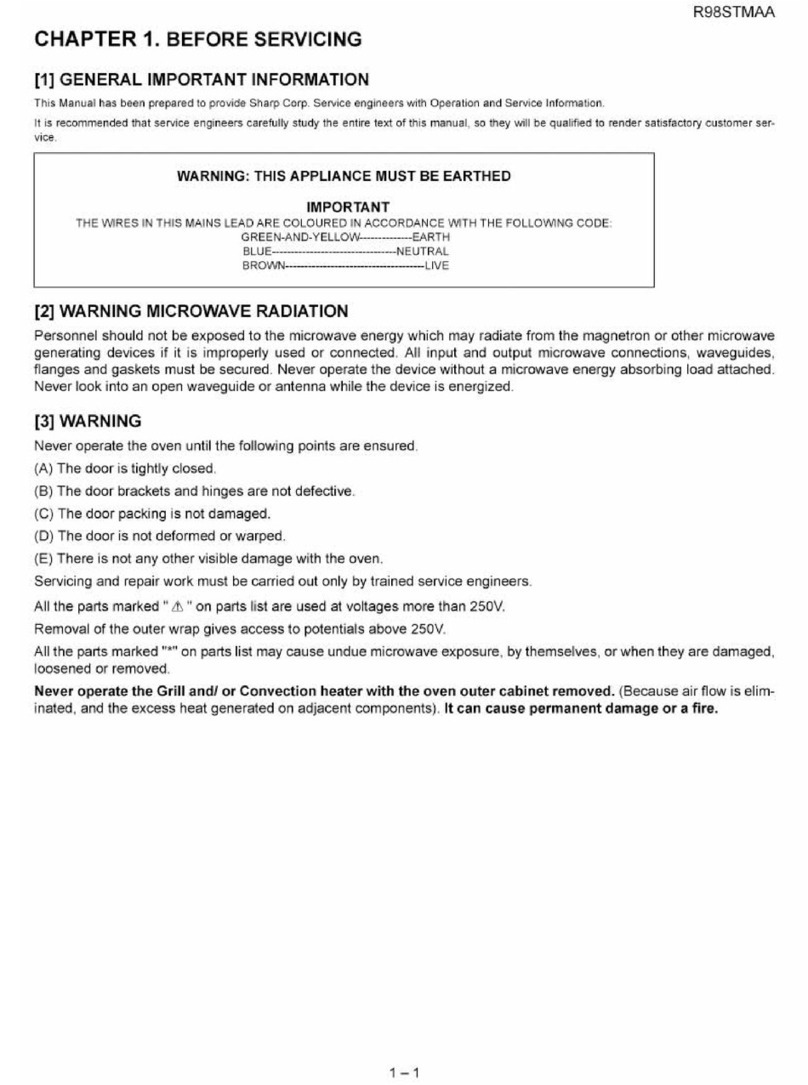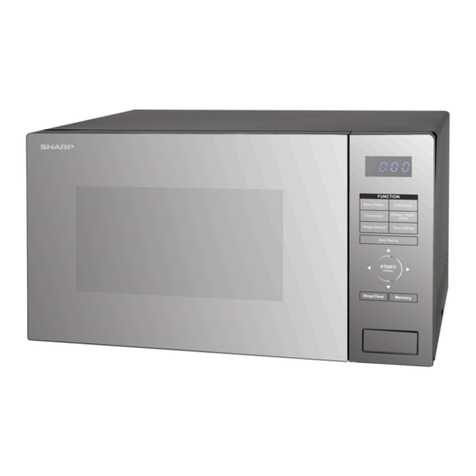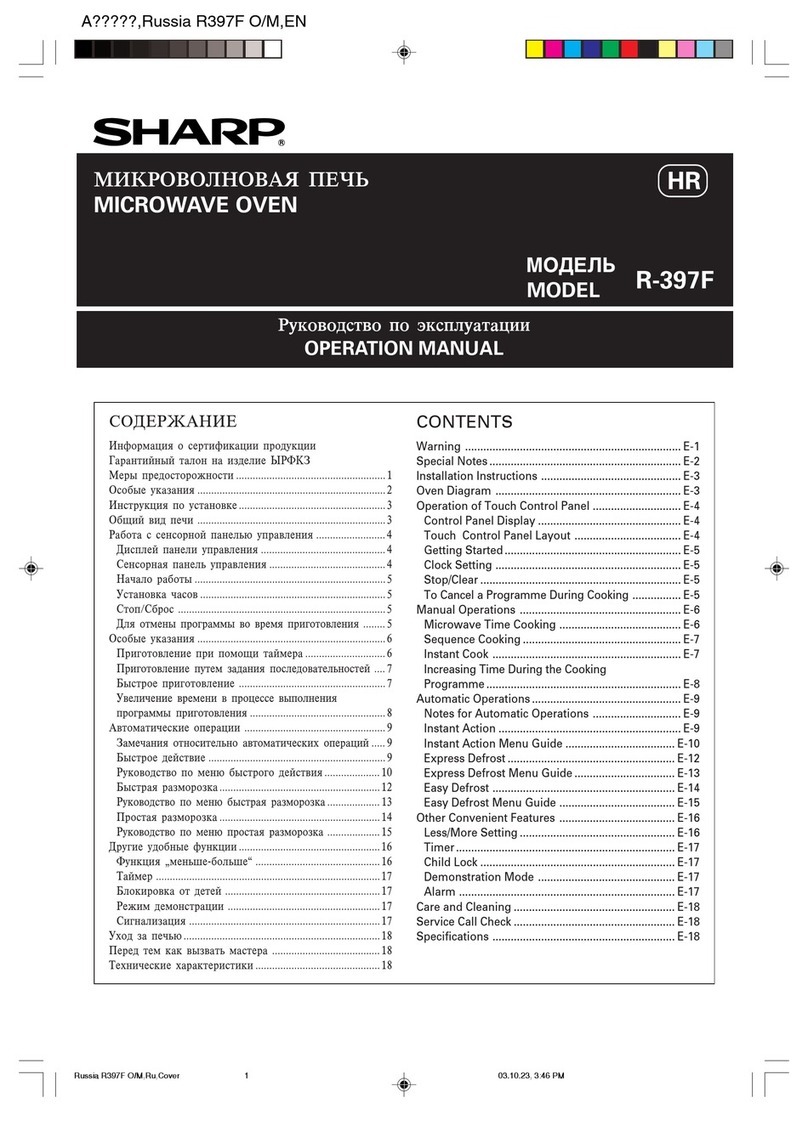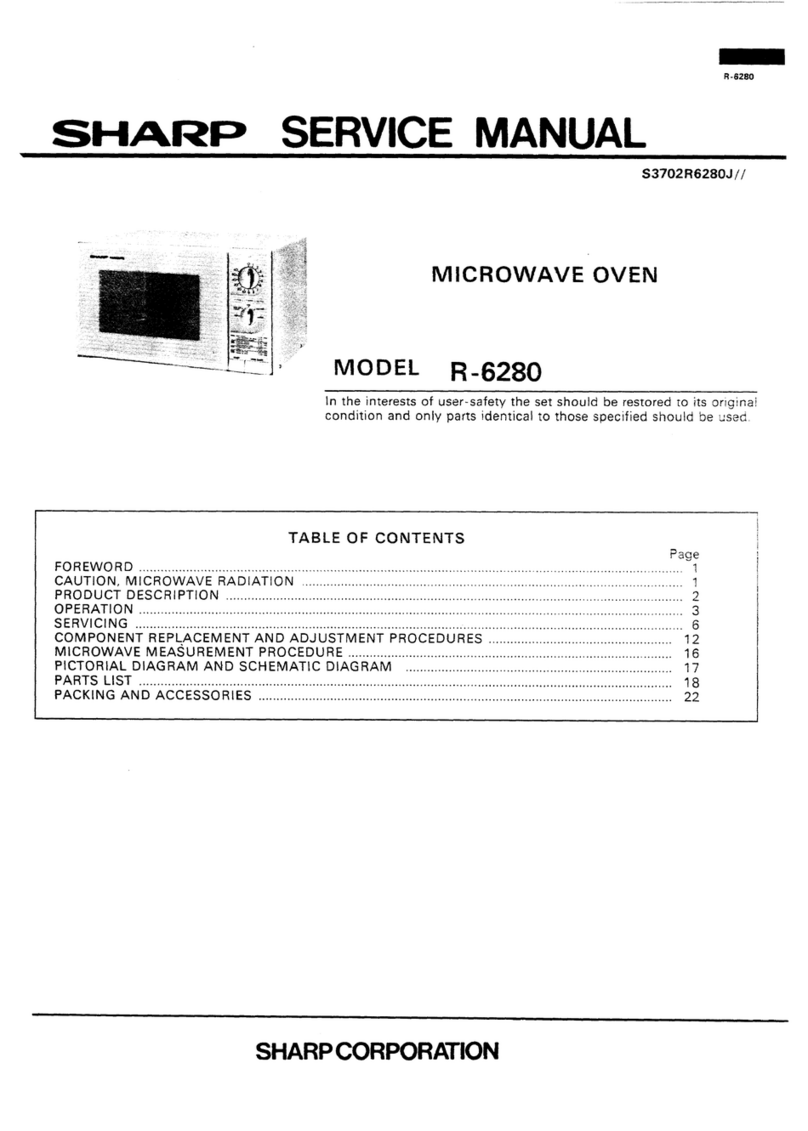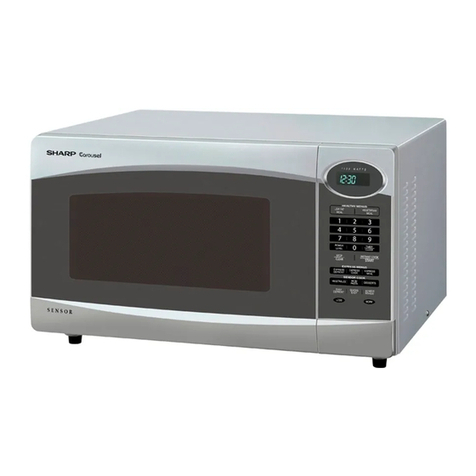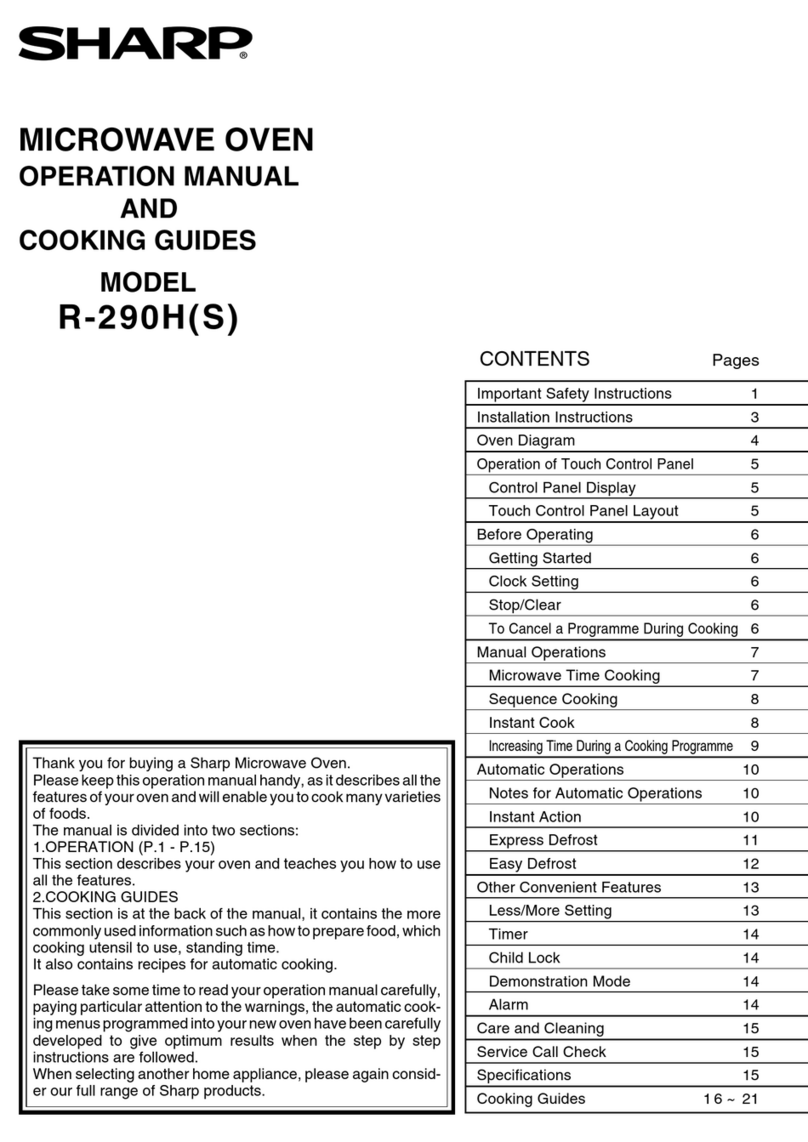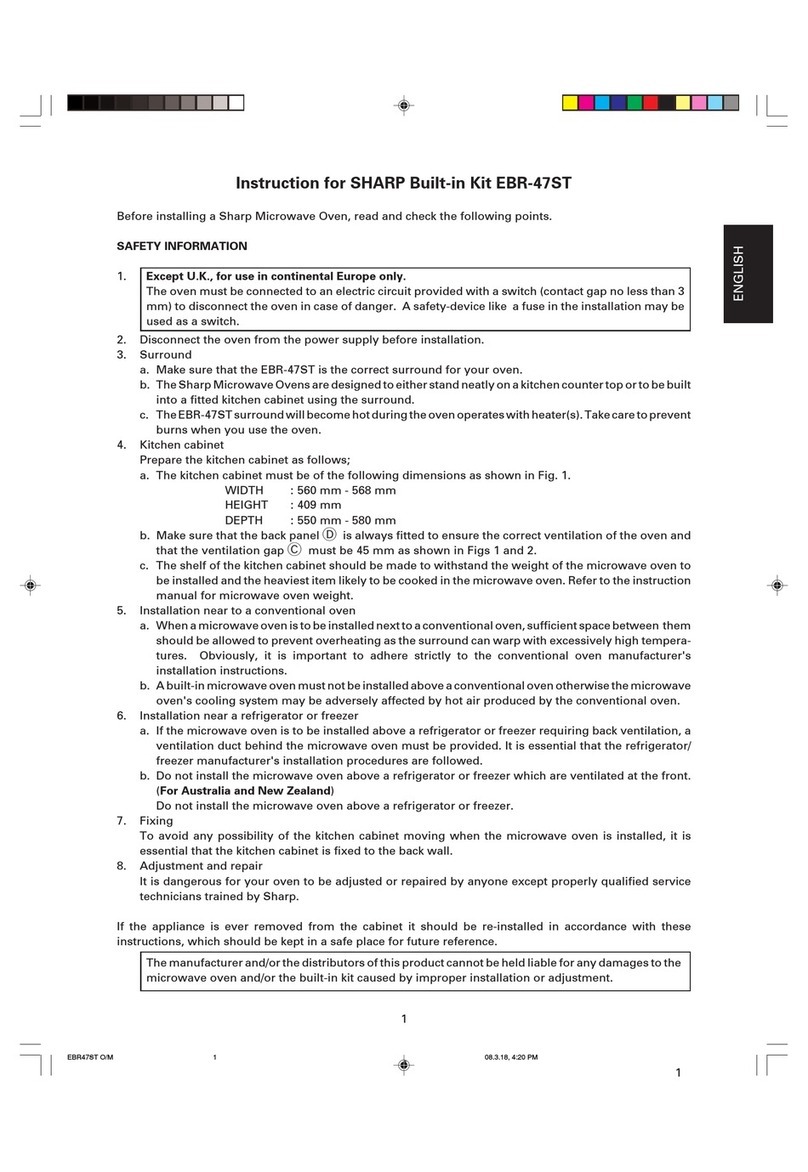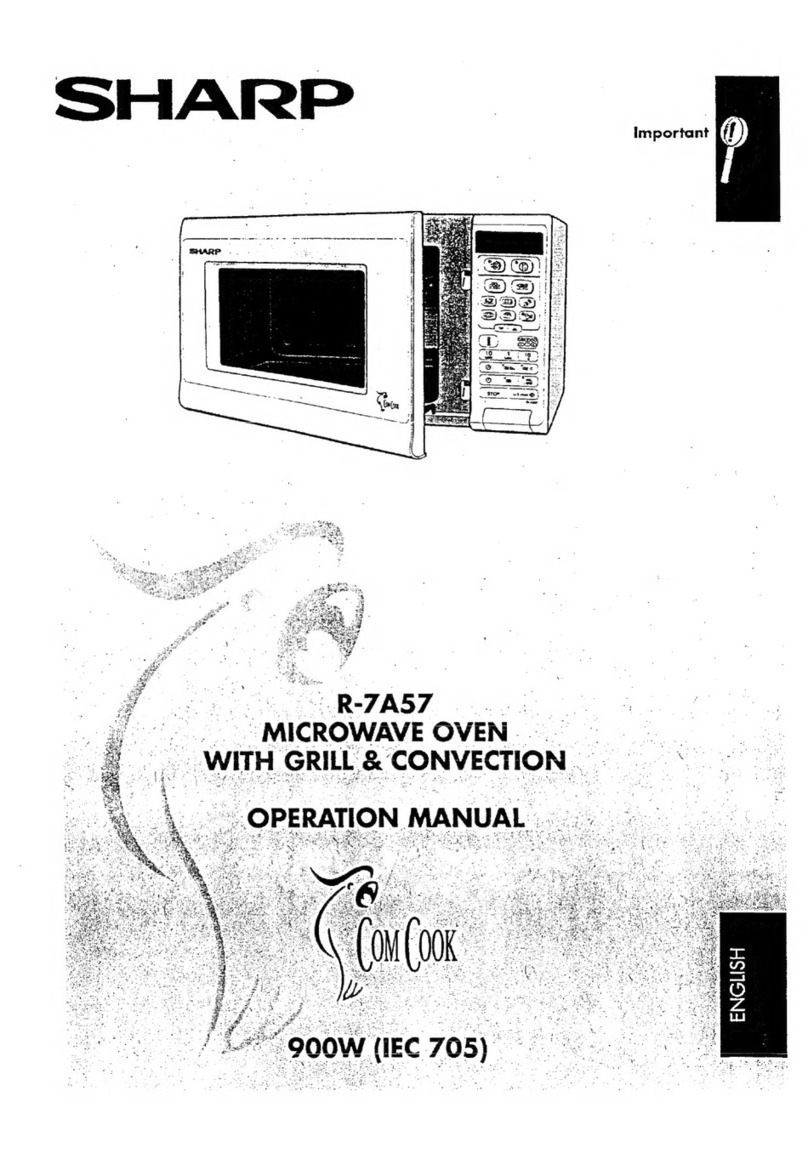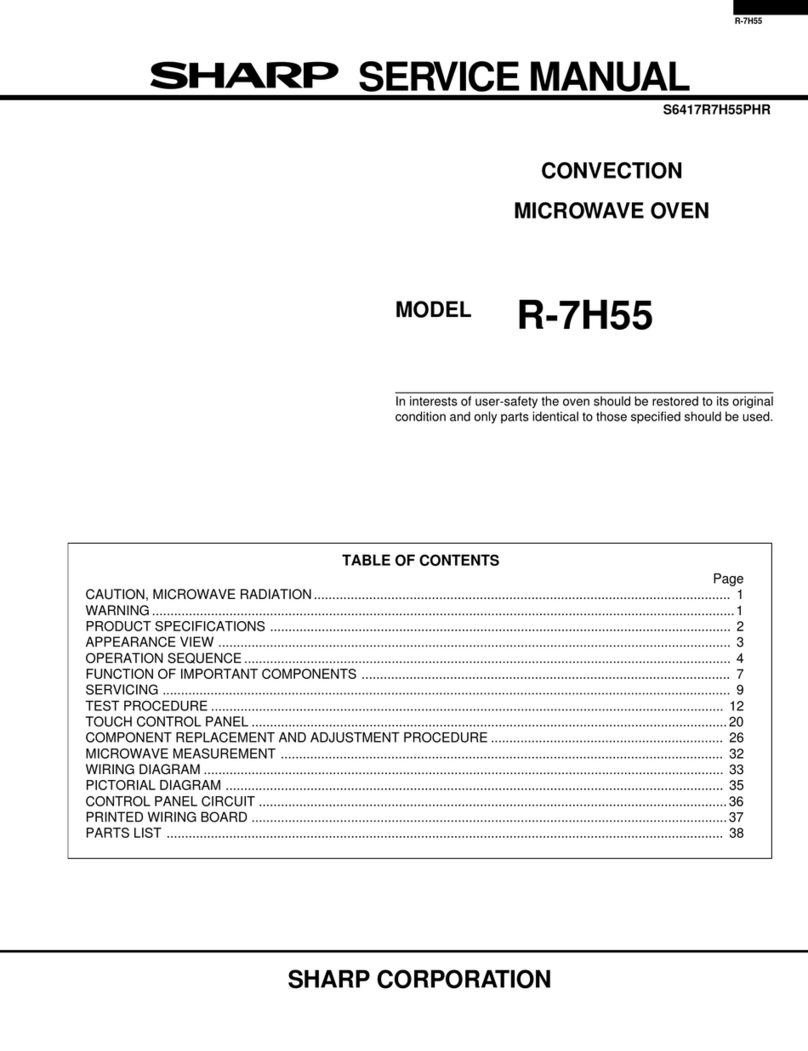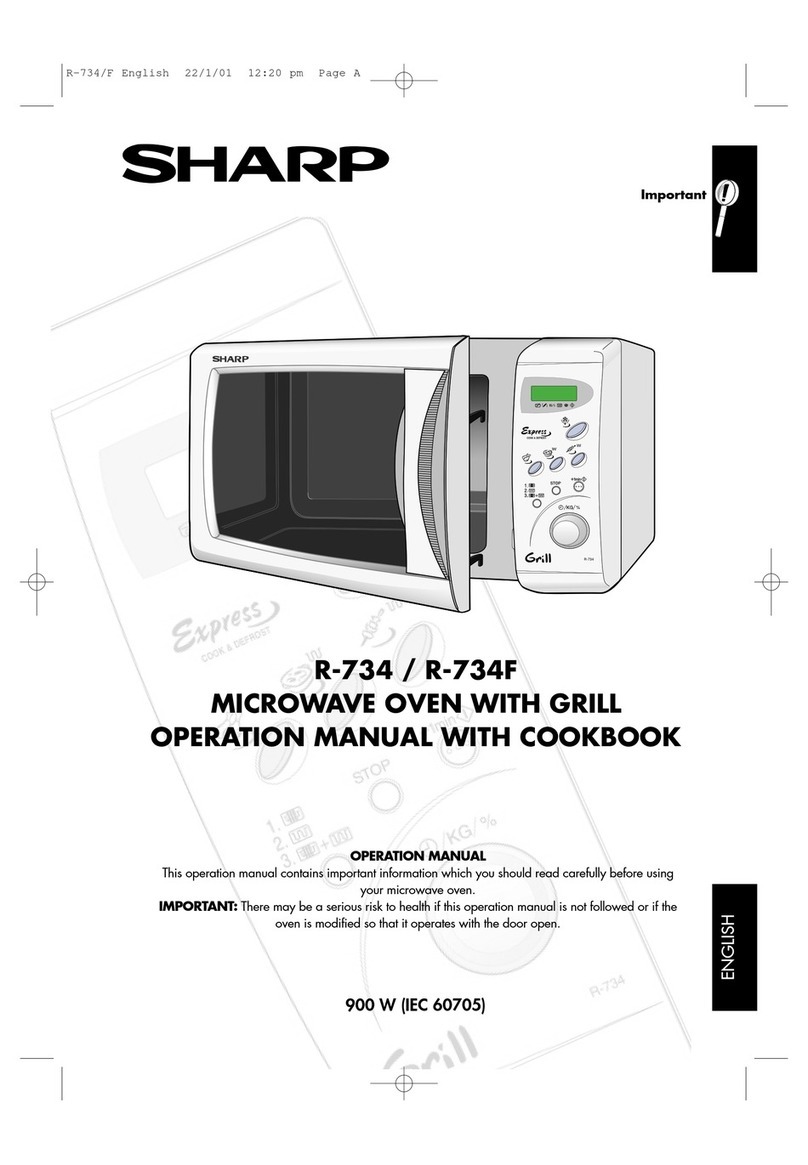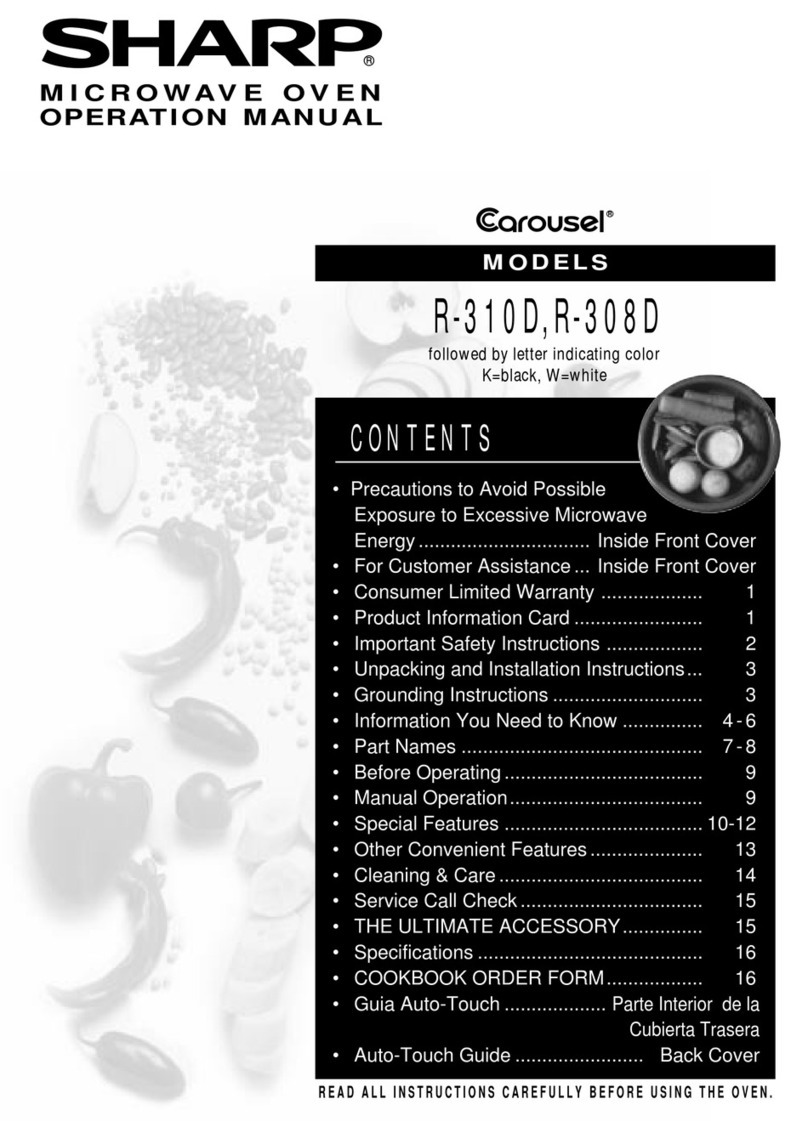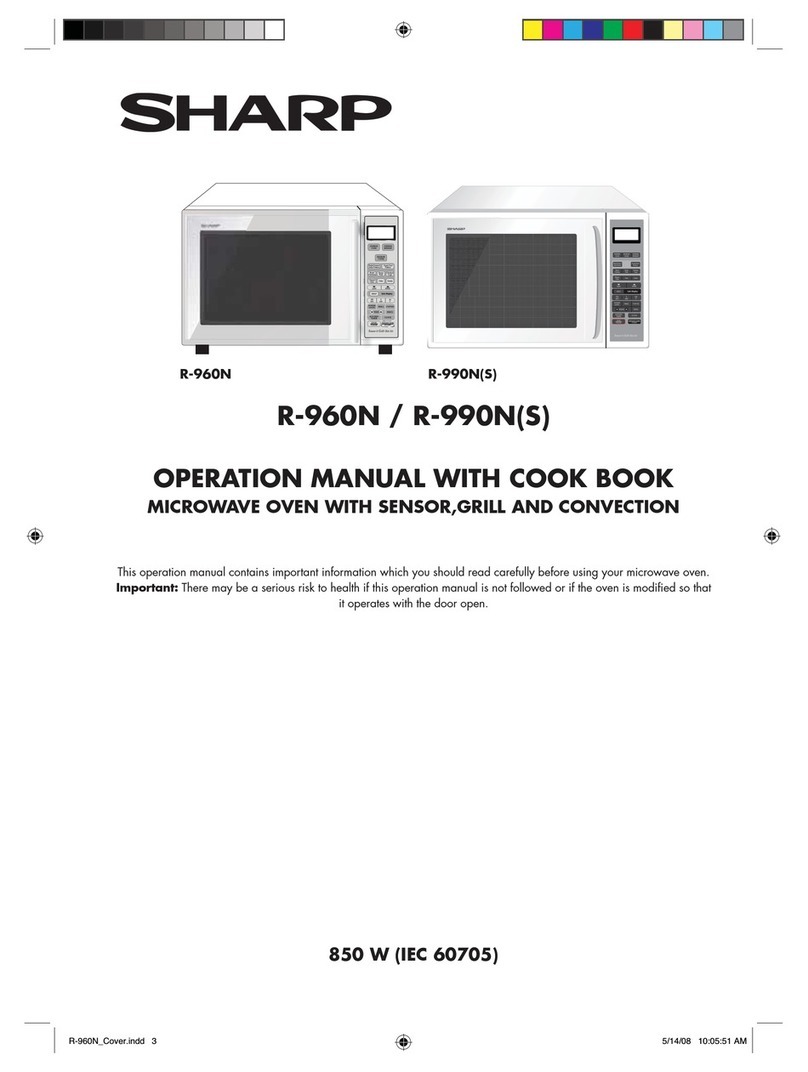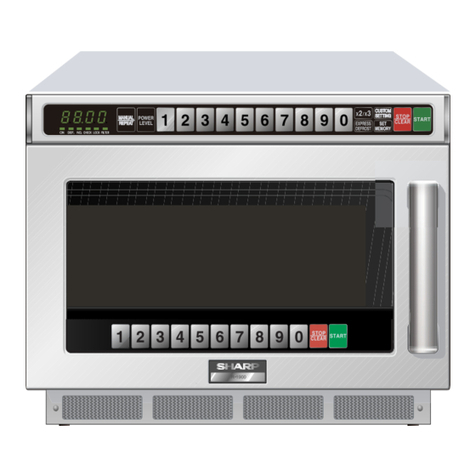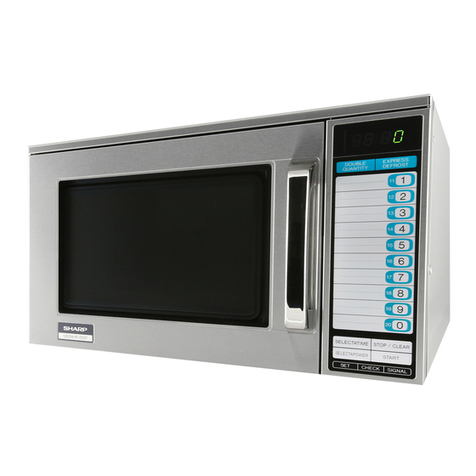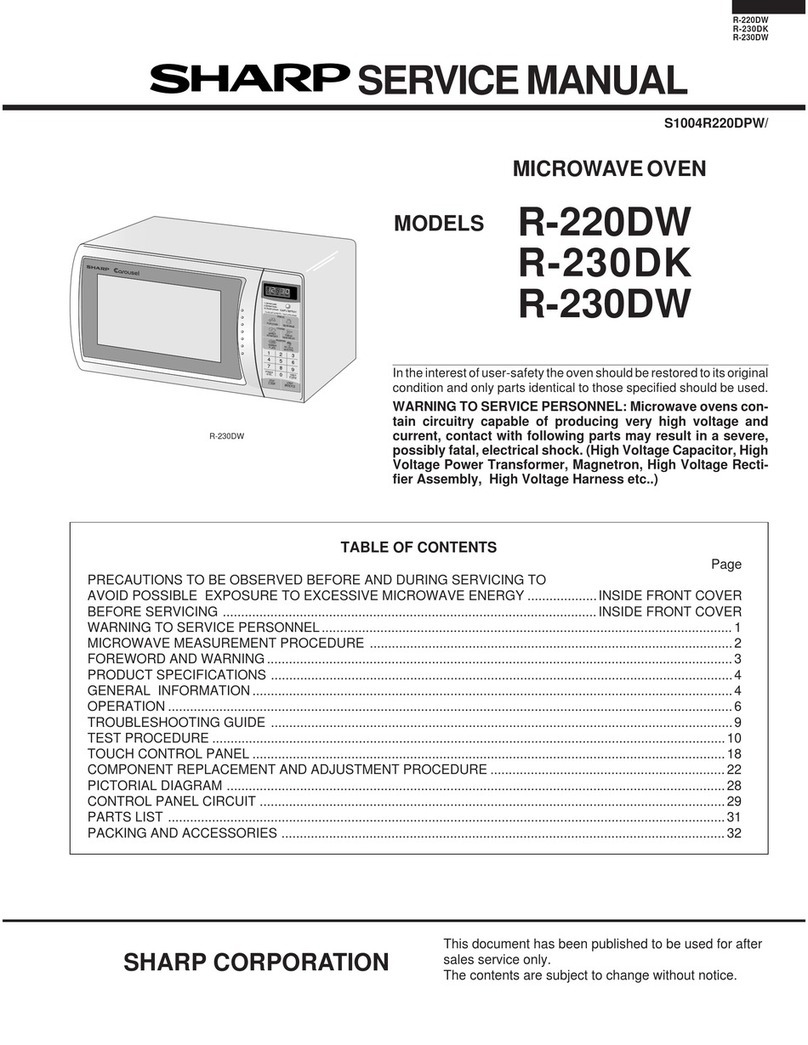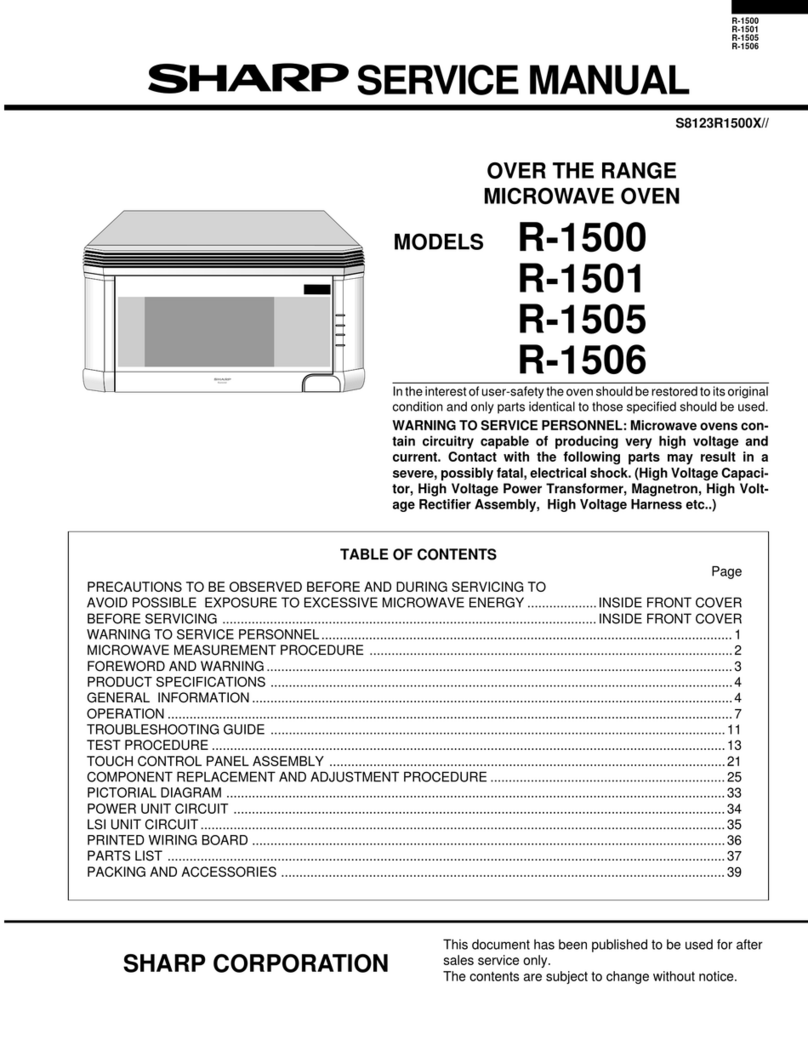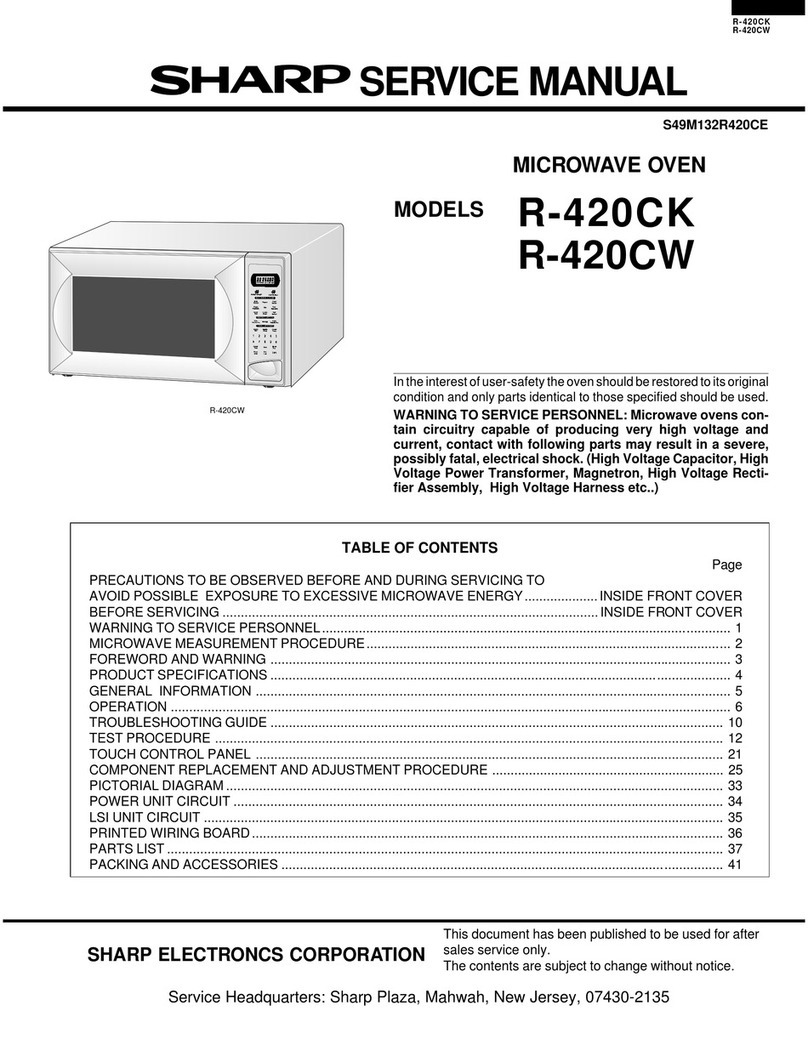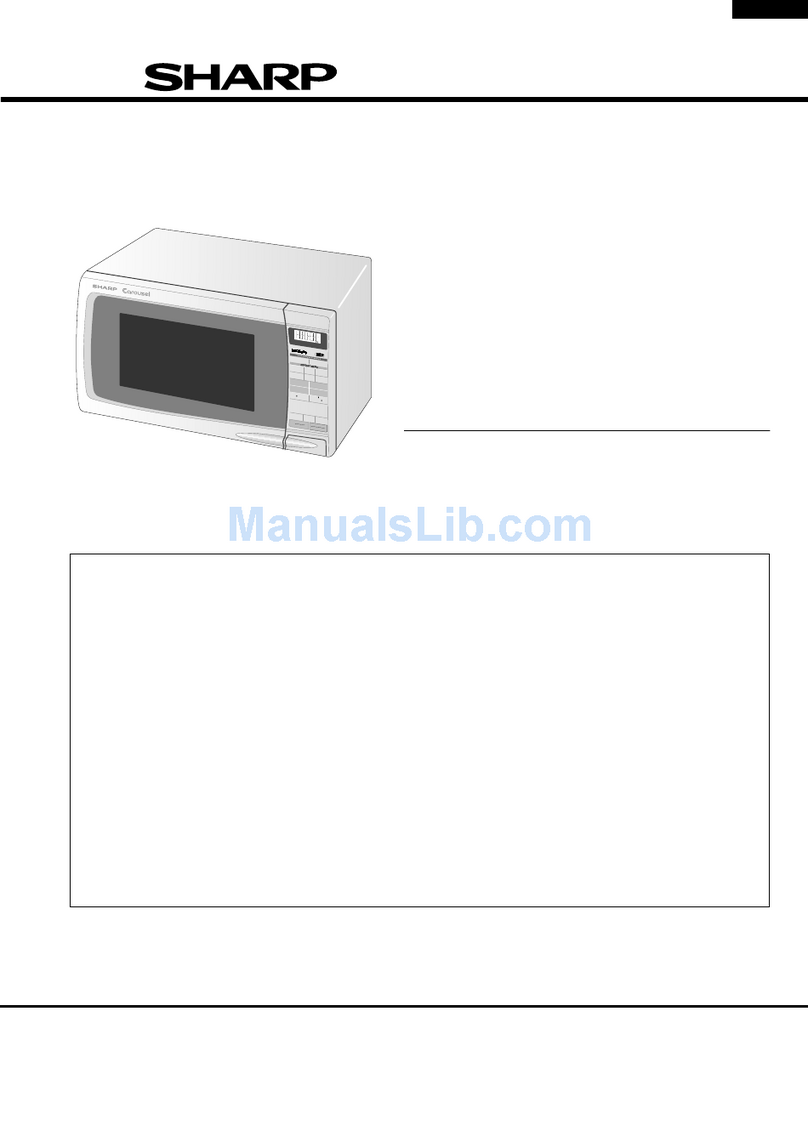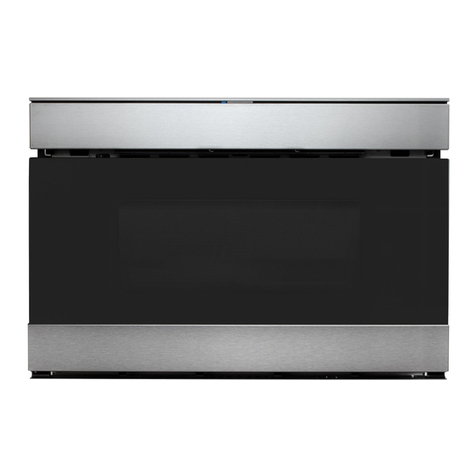
1
WARNING
IMPORTANT SAFETY INSTRUCTIONS : READ CAREFULLY AND KEEP FOR FUTURE REFERENCE.
To reduce the risk of fire in the oven cavity:
a. Do not overcook food.
b. Remove wire twist-ties from paper or plastic bags before placing bag in the oven.
c. Do not heat oil or fat for deep frying. The temperature of the oil cannot be controlled.
d. Look at the oven from time to time when food is heated in disposable containers made of plastic, paper
or other combustible materials for signs of smoke or burning.
e. If materials inside the oven should ignite, or smoke is observed, keep oven door closed, turn oven
off, and disconnect the power plug, or shut off power at the fuse or circuit breaker panel.
To reduce the risk of an explosion or delayed eruptive boiling when handling the container.
Your microwave oven is capable of heating food and beverages very quickly therefore, it is very important
that you select the appropriate cooking time and power level for the type and quantity of food to be heated.
If you are unsure of the cooking time and power level required, begin with low cooking times and power levels
until the food is sufficiently heated evenly throughout.
Additionally:
a. Do not place sealed containers in the oven. Babies bottles fitted with a screw cap or teat are
considered to be sealed containers.
b. Do not use excessive amount of time.
c. When boiling liquids in the oven, use a wide-mouthed container.
d. Stand at least for 20 seconds at the end of cooking to avoid delayed eruptive boiling of liquids.
e. Stir the liquid before and during cooking. Use extreme care when handling the container or inserting
a spoon or other utensil into the container.
This oven is for home food preparation only and should only be used for heating, cooking and defrosting food
and beverage.
It is not suitable for commercial, laboratory use, or heating therapeutic devices eg. Wheat bags.
Never operate the oven whilst any object is caught or jammed between the door and the oven.
Do not try to adjust or repair the oven yourself.
It is hazardous for anyone other than a qualified service technician trained by SHARP to carry out any service
or repair operation. Especially those which involve the removal of a cover which gives protection against
exposure to microwave energy are very hazardous.
Do not operate the oven if it is not working correctly or damaged until it has been repaired by a qualified service
technician trained by SHARP. It is particularly important that the oven door closes properly and that there
is no damage to:
(1) Door (warped), (2) Hinges and Latches (broken or loosened), (3) Door Seals, Sealing Surfaces and oven
cavity (buckled or deformed), (4) Burn marks on the door seal faces.
Handle with care when removing items from the oven so that the utensil, your clothes or accessories do not
touch the safety door latches.
Never poke an object, particularly a metal object, through a grille or between the door and the oven while the
oven is operating.
Never tamper with or deactivate the door safety latches.
Always use oven gloves to prevent burns when handling utensils that are in contact with hot food. Enough
heat from the food can transfer through utensils to cause skin burns.
Should the power supply cord become damaged, it must be replaced with a special cord supplied by a
SERVICE CENTRE APPROVED BY SHARP. And it must be replaced by a qualified service technician
trained by SHARP in order to avoid a hazard.
If the oven lamp fails please consult your dealer or a qualified service technician trained by SHARP.
Avoid steam burns by directing steam away from the face and hands.
Slowly lift the furthest edge of a dish's cover including microwave plastic wrap etc., and carefully open
popcorn and oven cooking bags away from the face.
Make sure that the power supply cord is undamaged, and that it does not run under the oven or over any hot
surfaces or sharp edges.
To prevent the turntable from breaking:
a. Before cleaning the turntable with water, leave the turntable to cool.
b. Do not place anything hot on a cold turntable.
c. Do not place anything cold on a hot turntable.
Do not place anything on the outer cabinet.
Do not store food or any other items inside the oven.
Make sure the utensil does not touch the interior walls during cooking.
Only allow children to use the oven without supervision when adequate instructions have been given so that
the child is able to use the oven in a safe way and understands the hazards of improper use.
This appliance is not intended for use by young children or infirm persons without supervision.
Young children should be supervised to ensure that they do not play with the appliance.
R260L EN P01-04 06.12.8, 3:31 PM1
